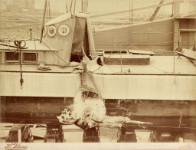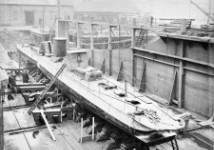Share: 


Turbinia: fastest boat in the world (1896)
 Very few ships can be said to have changed the world of naval power. One of the least remembered, but critically important, was Turbinia, the world’s first steam turbine powered boat. When it was perfected in 1896, it was literally twice as fast as anything in service with Navies. The world of naval combat was changed forever.
Very few ships can be said to have changed the world of naval power. One of the least remembered, but critically important, was Turbinia, the world’s first steam turbine powered boat. When it was perfected in 1896, it was literally twice as fast as anything in service with Navies. The world of naval combat was changed forever.
Original artwork. CLICK for high-resolution image:

Turbinia was the brainchild of Charles Parsons who invented a practical steam turbine. Until this point steam engines had used the expanding air to pump pistons which in turn were converted into rotational force to drive screws. The Steam Turbine was an order of magnitude more efficient and because it was already spinning, it was more efficient in the conversion also. Parsons quickly realized that his invention could revolutionize warship design.
The challenge was that Parsons was not a naval architect. This did not stop him from designing a sleek boat which was not only beautiful, but incredibly well designed and effective. Launched in 1894 Turbinia was nominally an experimental yacht. She was built out of steel with one of Parsons Marine Steam Turbine Co’s new-fangled steam turbines driving a single screw.
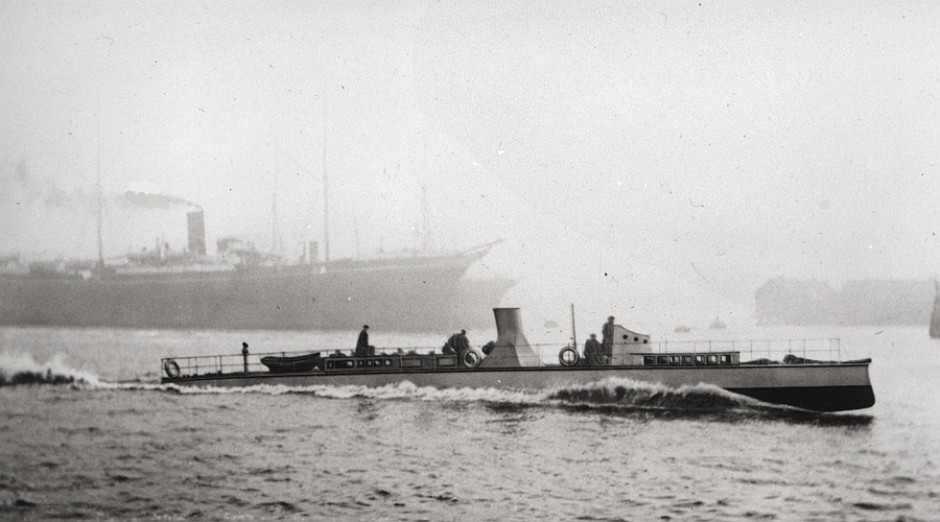
Turbinia in her early configuration.
Although a fast boat, initial trials were disappointing however. She could not reach the calculated top speed. Parson was a serious scientist and conducted series of experiments to diagnose the problem. In the process he discovered cavitation, where air bubbles form in low pressure pockets of air (i.e. on the back of a spinning screw) and then collapse. This process is inefficient and noisy, and can damage the screw. Parsons observed this and designed a series of experimental screws which eventually minimized this issue.
In 1896 Parsons also trebled the steam turbines, which necessitated increasing the size of the funnel and other external changes. In the process Turbinia went from having a single screw to having nine (!) arranged on three shafts, each with three screws in-line. The solution was novel, elegant and at the time, literally cutting-edge technology:
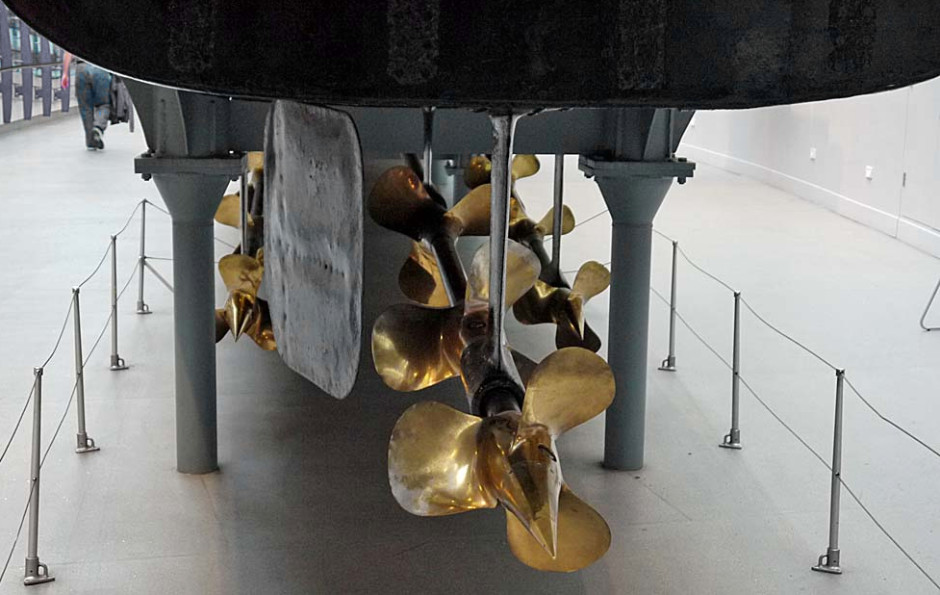
This and other excellent photos at 'I Must Go Down to the Sea Again.....'
By 1897 Parsons had the design perfected and was ready to amaze the world. Possibly frustrated that the Navy had not leapt at his design, he set out to embarrass them into action. On 26th June 1897 Turbinia turned up unannounced at Queen Victoria's Diamond Jubilee Navy Review at Spithead. In front of the Prince of Wales, the Lords of the Admiralty and many foreign dignitaries she raced up the line of warships, easily out-pacing them. She was in fact about three times faster than the battleships of the day which although steam powered, still had sails for longer journeys.
The ultimate book of Special Forces subs Covert Shores 2nd Edition is the ONLY world history of naval Special Forces, their missions and their specialist vehicles. SEALs, SBS, COMSUBIN, Sh-13, Spetsnaz, Kampfschwimmers, Commando Hubert, 4RR and many more.
Check it out on Amazon
Following this incredible and convincing display, Parsons was allowed to build two steam turbine powered Viper Class destroyers. These were about twice as large as Turbinia and armed with two 18 inch (450 mm) torpedo tubes in tandem swivel mounts on the centerline and on QF 12 pounder 12 cwt (3 in (76 mm) calibre) gun forward and five 6-pounder (57 mm) guns. Performance was comparable (or faster) than Turbinia although fuel consumption was high. The vessels were launched in 1899 and served for a few years before both being lost in accidents in 1901. The steam turbine had proven itself however and there was no turning back. Almost all new large warships were steam turbine powered thereafter, until after World War Two.
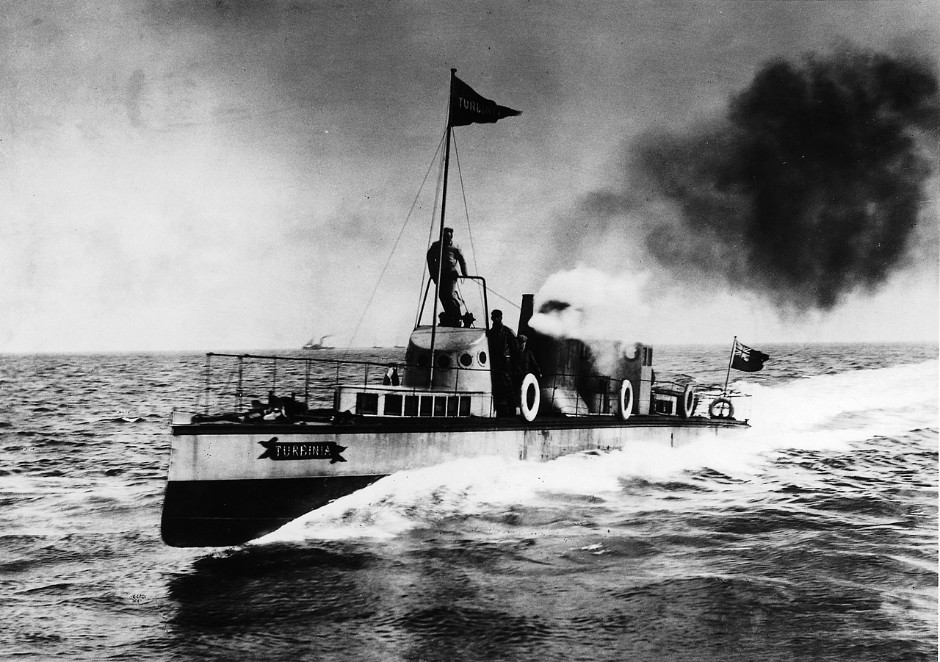
Specifications:
Displacement: 44.5 tons
Length: 32 meters
Beam: 2.7 meters
Speed: 34.5 knots
Complement: 64 ordinarily
Armament: none
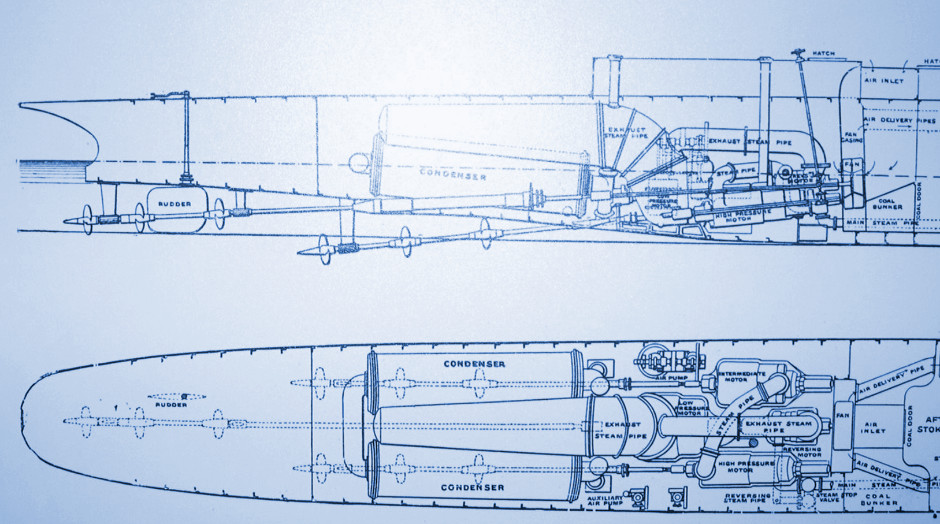
Get The essential guide to World Submarines
This Covert Shores Recognition Guide Covers over 80 classes of submarines including all types currently in service with World Navies.Check it out on Amazon
In 1907 disaster struck when another ship being launched, lost control and sliced into the port side of Turbinia near the forward superstructure:
She was almost cut in half, but fortunately could be repaired and was put back into service. She was finally retired in 1926, over 30 years after being launched. Today she is fully restored and on display at the Newcastle Discovery Museum, which is free to enter.
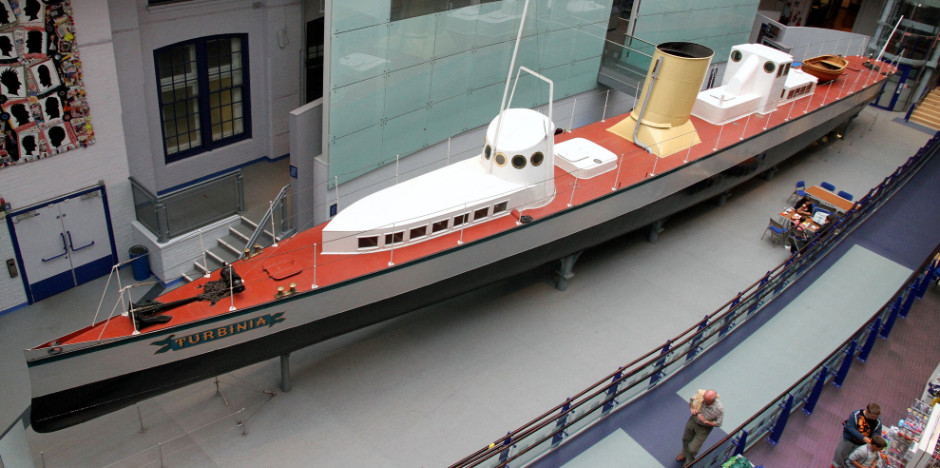
Related articles (Full index of popular Covert Shores articles)

 Surcouf Cruiser Submarine w/Cutaway
Surcouf Cruiser Submarine w/Cutaway
 Nautilus 2020 Luxury Private Submarine. w/Cutaway
Nautilus 2020 Luxury Private Submarine. w/Cutaway
 Cutaway of Jules Verne’s Nautilus. w/Cutaway
Cutaway of Jules Verne’s Nautilus. w/Cutaway
 Armored Stealth Boat used for car smuggling by Chinese organized crime. w/Cutaway
Armored Stealth Boat used for car smuggling by Chinese organized crime. w/Cutaway
 Narco Subs 101. w/Cutaway
Narco Subs 101. w/Cutaway
 LTTE Sea Tigers' sneak craft and midget subs
LTTE Sea Tigers' sneak craft and midget subs
 Type-XXIXH stealth U-Boat. w/Cutaway
Type-XXIXH stealth U-Boat. w/Cutaway

 Japanese Ha201 Sen-Taka-Sho fast attack submarine of WW2
Japanese Ha201 Sen-Taka-Sho fast attack submarine of WW2

 SubSEAL advanced SDV
SubSEAL advanced SDV
 Sleeping Beauty (Motorised Submersible Canoe) of WW2
Sleeping Beauty (Motorised Submersible Canoe) of WW2

 SubCat SDV
SubCat SDV




